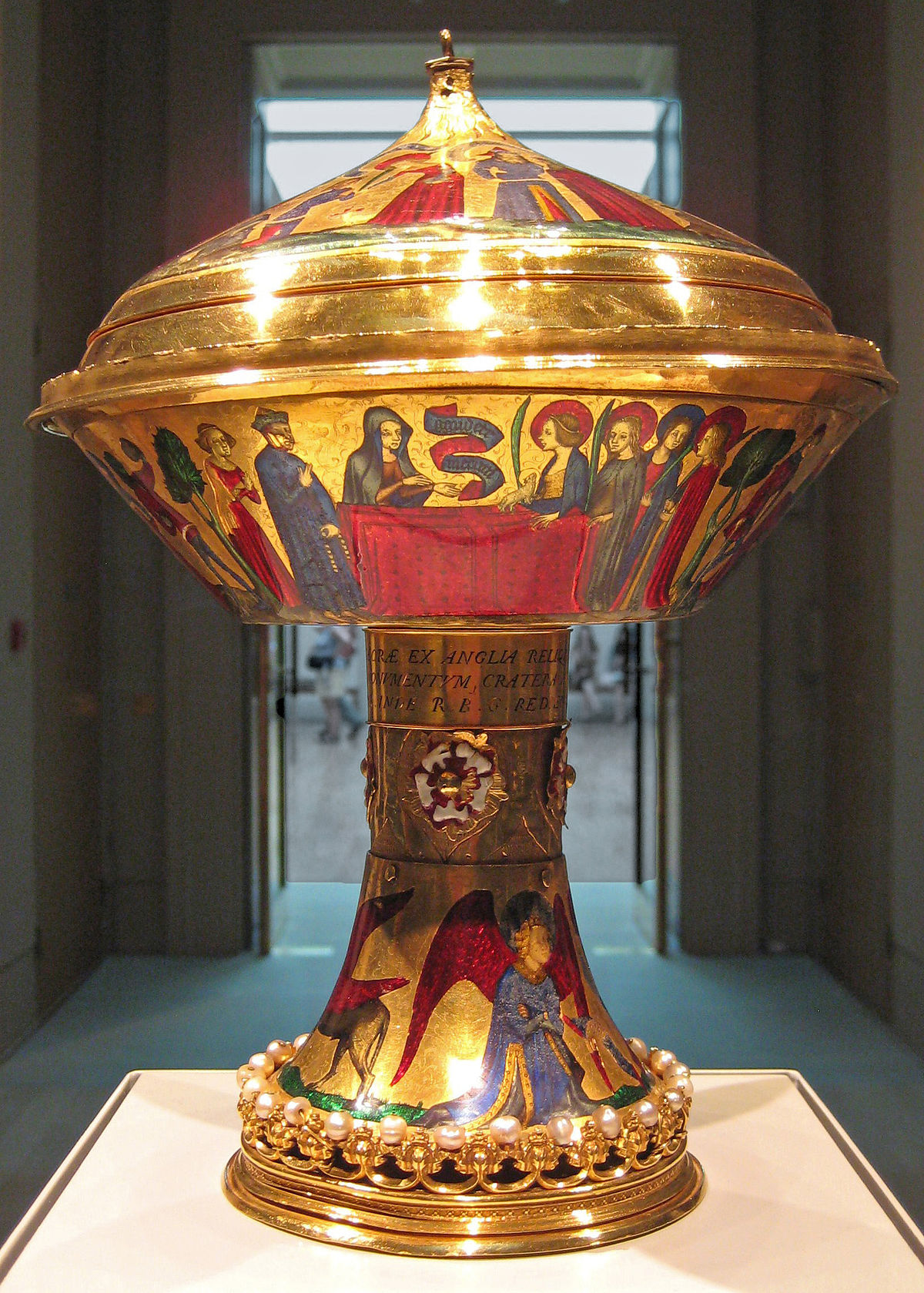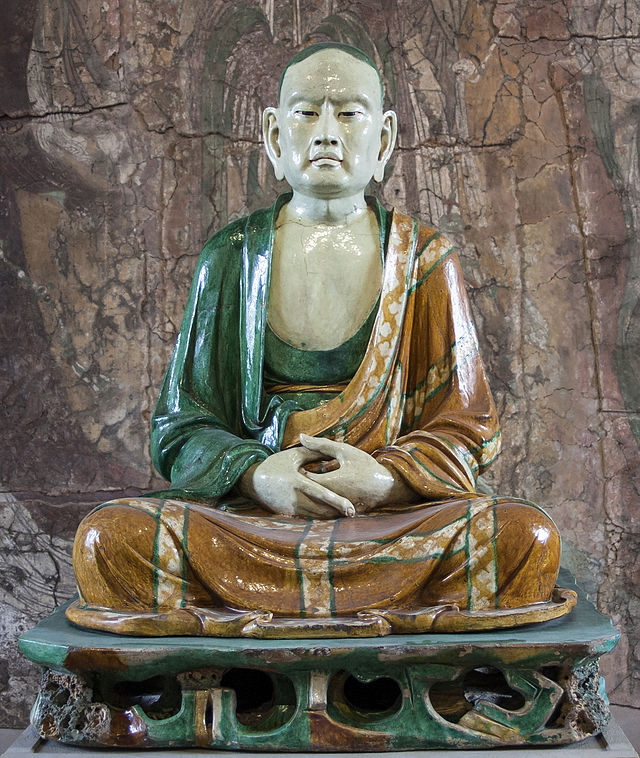Please wait ...
The British Museum of London, United Kingdom, is a public institution dedicated to human history, art and culture. Its permanent collection of some eight million works is among the largest and most comprehensive in existence, having been widely sourced during the era of the British Empire. It documents the story of human culture from its beginnings to the present. It was the first public national museum in the world.

The British Museum was established in 1753, largely based on the collections of the Irish physician and scientist Sir Hans Sloane. It first opened to the public in 1759, in Montagu House, on the site of the current building. Its expansion over the following 250 years was largely a result of expanding British colonization and has resulted in the creation of several branch institutions, the first being the Natural History Museum in 1881.
On 7 June 1753, King George II gave his Royal Assent to the Act of Parliament which established the British Museum. The British Museum Act 1753 also added two other libraries to the Sloane collection, namely the Cottonian Library, assembled by Sir Robert Cotton, dating back to Elizabethan times, and the Harleian Library, the collection of the Earls of Oxford. They were joined in 1757 by the "Old Royal Library", now the Royal manuscripts, assembled by various British monarchs. Together these four "foundation collections" included many of the most treasured books now in the British Library including the Lindisfarne Gospels and the sole surviving manuscript of Beowulf.

The British Museum was the first of a new kind of museum – national, belonging to neither church nor king, freely open to the public and aiming to collect everything. Sloane's collection, while including a vast miscellany of objects, tended to reflect his scientific interests. The addition of the Cotton and Harley manuscripts introduced a literary and antiquarian element and meant that the British Museum now became both the National Museum and library.
Today the museum no longer houses collections of natural history, and the books and manuscripts it once held now form part of the independent British Library. The museum nevertheless preserves its universality in its collections of artefacts representing the cultures of the world, ancient and modern. The original 1753 collection has grown to over 13 million objects at the British Museum, 70 million at the Natural History Museum and 150 million at the British Library.

As part of its very large website, the museum has the largest online database of objects in the collection of any museum in the world, with 2,000,000 individual object entries, 650,000 of them illustrated, online at the start of 2012. There is also a "Highlights" database with longer entries on over 4,000 objects, and several specialized online research catalogues and online journals (all free to access). In 2013 the museum's website received 19.5 million visits, an increase of 47% from the previous year.

In 2013 the museum received a record of 6.7 million visitors, an increase of 20% from the previous year. Popular exhibitions including "Life and Death in Pompeii and Herculaneum" and "Ice Age Art" are credited with helping fuel the increase in visitors. Plans were announced in September 2014 to recreate the entire building along with all exhibits in the video game Minecraft in conjunction with members of the public.
Egypt and Sudan
The British Museum houses the world's largest and most comprehensive collection of Egyptian antiquities (with over 100,000 pieces) outside the Egyptian Museum in Cairo. A collection of immense importance for its range and quality, it includes objects of all periods from virtually every site of importance in Egypt and Sudan.

Together, they illustrate every aspect of the cultures of the Nile Valley (including Nubia), from the Predynastic Neolithic period (c. 10,000 BC) through Coptic (Christian) times (12th century AD), and up to the present day, a time-span over 11,000 years.
Middle East
With a collection numbering some 330,000 works, the British Museum possesses the world's largest and most important collection of Mesopotamian antiquities outside Iraq.

A collection of immense importance, the holdings of Assyrian sculpture, Babylonian and Sumerian antiquities are among the most comprehensive in the world with entire suites of rooms paneled in alabaster Assyrian palace reliefs from Nimrud, Nineveh and Khorsabad.
Greece and Rome
The British Museum has one of the world's largest and most comprehensive collections of antiquities from the Classical world, with over 100,000 objects. These mostly range in date from the beginning of the Greek Bronze Age (about 3200 BC) to the establishment of Christianity as the official religion of the Roman Empire, with the Edict of Milan under the reign of the Roman Emperor Constantine I in 313 AD.

Room 18 – Parthenon marbles from the Acropolis of Athens, 447 BC

Room 12 – A gold earring from the Aegina Treasure, Greece, 1700-1500 BC
Archaeology was in its infancy during the nineteenth century and many pioneering individuals began excavating sites across the Classical world, chief among them for the museum were Charles Newton, John Turtle Wood, Robert Murdoch Smith and Charles Fellows.

Room 22 – Apollo of Cyrene (holding a lyre), Libya, c. 2nd century AD

Room 22 - Gold oak wreath with a bee and two cicadas, western Turkey, c. 350-300 BC
Prints and Drawings
The Department of Prints and Drawings holds the national collection of Western prints and drawings. It ranks as one of the largest and best print room collections in existence alongside the Albertina in Vienna, the Paris collections and the Hermitage.

Rogier van der Weyden - Portrait of a Young Woman, c. 1440

Albrecht Dürer - Drawing of a walrus, 1521
The holdings are easily accessible to the general public in the Study Room, unlike many such collections.
Britain and Europe
The Department of Britain, Europe and Prehistory is responsible for collections that cover a vast expanse of time and geography. It includes some of the earliest objects made by humans in east Africa over 2 million years ago, as well as Prehistoric and neolithic objects from other parts of the world; and the art and archaeology of Europe from the earliest times to the present day.

Room 51 – Mold gold cape, North Wales, Bronze Age, c. 1900–1600 BC
Archeological excavation of prehistoric material took off and expanded considerably in the twentieth century and the department now has literally millions of objects from the Paleolithic and Mesolithic periods throughout the world, as well as from the Neolithic, Bronze Age and Iron age in Europe.

Room 40 – Royal Gold Cup or Saint Agnes Cup, made in Paris, France, 1370–80 AD
Stone Age material from Africa has been donated by famous archaeologists such as Louis and Mary Leakey, and Gertrude Caton–Thompson. Paleolithic objects from the Sturge, Christy and Lartet collections include some of the earliest works of art from Europe.
Africa, Oceania and Americas
The British Museum houses one of the world's most comprehensive collections of Ethnographic material from Africa, Oceania and the Americas, representing the cultures of indigenous peoples throughout the world. Over 350,000 objects spanning thousands of years tells the history of mankind from three major continents and many rich and diverse cultures; the collecting of modern artefacts is ongoing.
Room 25 – Collection of African throwing knives
Many individuals have added to the department's collection over the years but those assembled by Henry Christy, Harry Beasley and William Oldman are outstanding. Objects from this department are mostly on display in several galleries on the ground and lower floors. Gallery 24 displays ethnographic from every continent while adjacent galleries focus on North America and Mexico.

Room 24 - Bird pectoral made from gold alloy, Popayán, Colombia, 900-1600 AD
A long suite of rooms (Gallery 25) on the lower floor display African art. There are plans in place to develop permanent galleries for showcasing art from Oceania and South America.
Asia
The scope of the Department of Asia is extremely broad; its collections of over 75,000 objects cover the material culture of the whole Asian continent (from East, South, Central and South-East Asia) and from the Neolithic up to the present day. Until recently, this department concentrated on collecting Oriental antiquities from urban or semi-urban societies across the Asian continent.
Room 33 - One of the hu from Huixian, China, 5th century BC
A large number of Chinese antiquities were purchased from the Anglo-Greek banker George Eumorfopoulos in the 1930s. In the second half of the twentieth century, the museum greatly benefited from the bequest of the philanthropist PT Brooke Sewell, which allowed the department to purchase many objects and fill in gaps in the collection.

Room 33 - The luohan from Yixian made of glazed stoneware, China, 907-1125 AD
Room 90 - Courtesans of the Tamaya House, attributed to Utagawa Toyoharu, screen painting; Japan, Edo period, late 1770s or early 1780s AD